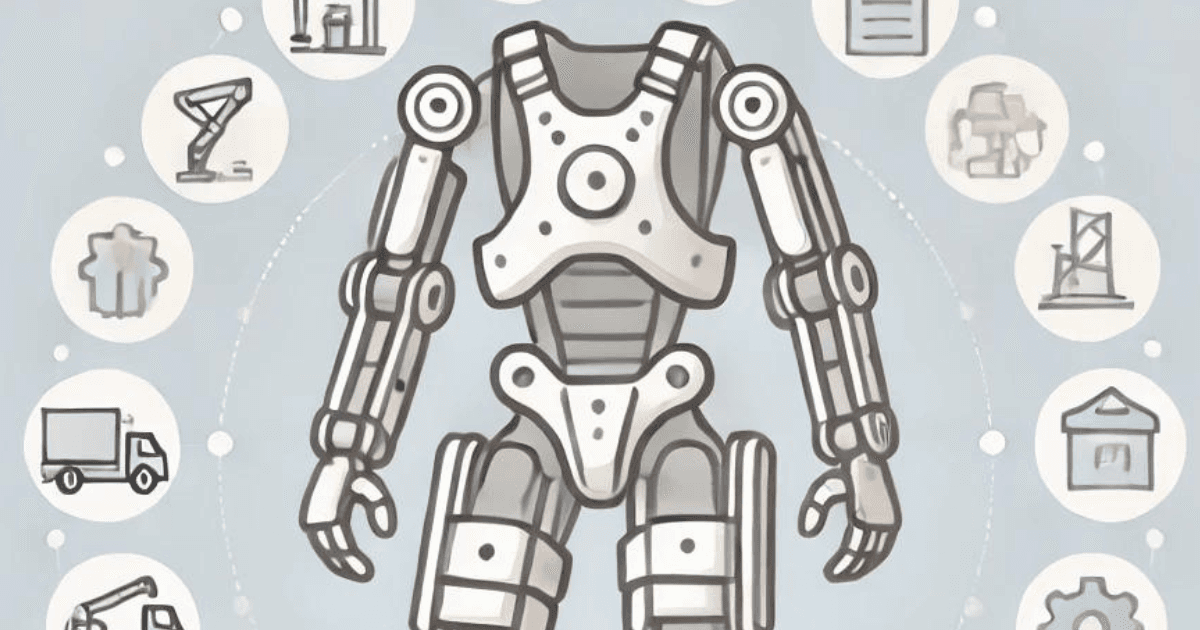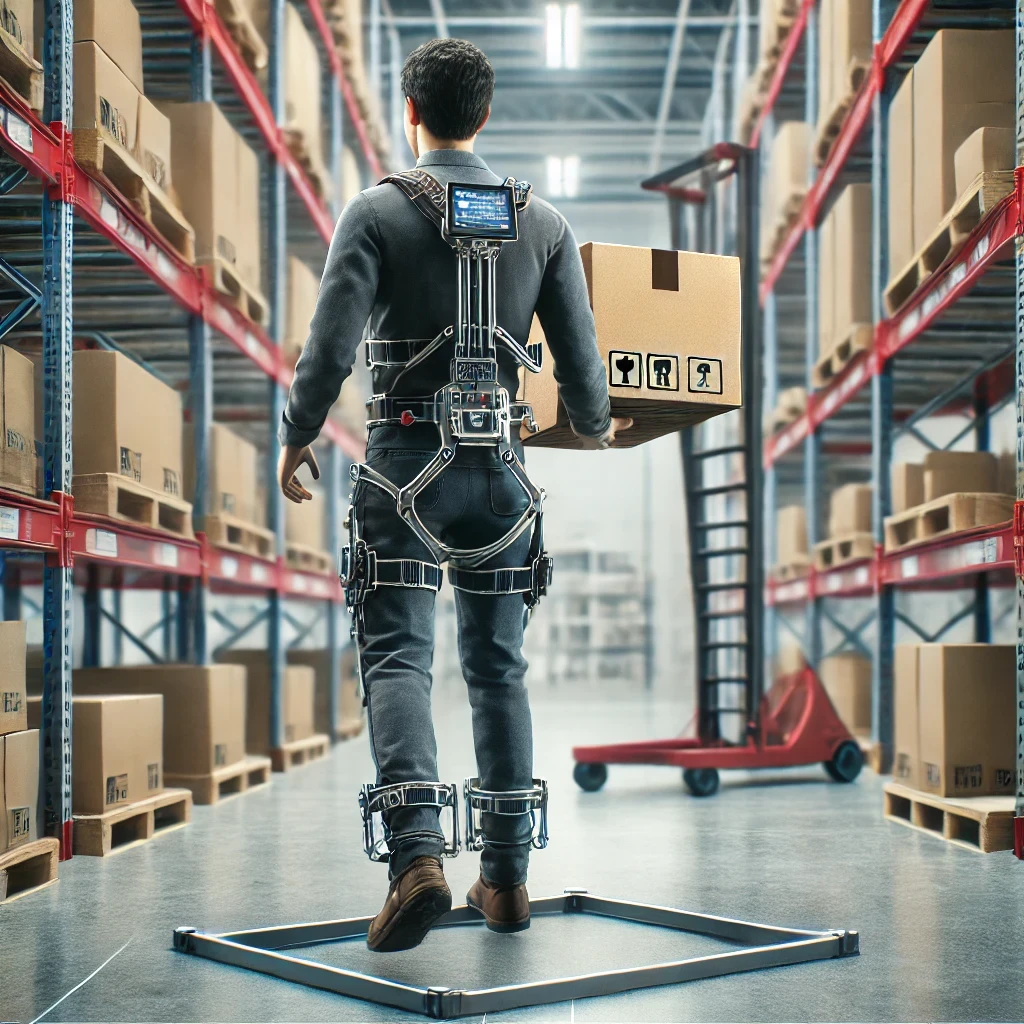Sep 20, 2024
How to choose the ideal exoskeleton for your business
Discover our comprehensive guide to choosing the ideal exoskeleton. Identify your needs, evaluate the options, and enhance safety and productivity.

The integration of exoskeletons in work environments is becoming increasingly common, offering significant benefits in terms of productivity, reducing injuries, and employee well-being. However, choosing the right exoskeleton for your company can be a complex task. This guide will help you navigate through the different options to find the model that best suits your specific needs.
1. Identify Your Specific Needs
The first step in choosing an exoskeleton is to fully understand your company's needs. Ask yourself the following questions:
- What type of work is being performed? Is it primarily physical work, such as lifting heavy loads, or work that involves repetitive movements?
- What are the main injury risks? Exoskeletons can help prevent musculoskeletal disorders (MSDs) and other types of injuries. Identifying the areas of the body that are most stressed is crucial for choosing the right model.
- What is the available budget? Costs can vary depending on the type and features of the exoskeleton.
2. Understand the Different Types of Exoskeletons
Exoskeletons can be classified into several categories, each suited to specific needs:
- Passive Exoskeletons: These models do not use external power and are designed to support the body's natural movements. They are often used for moderate lifting tasks or to reduce fatigue.
- Active Exoskeletons: Equipped with motors or other assistive devices, these exoskeletons are designed to provide more substantial assistance, ideal for repetitive tasks or heavy loads.
3. Evaluate Ergonomics and Comfort
Ergonomics is a key factor in choosing an exoskeleton. A well-designed model must:
- Be adjustable to fit different body types.
- Offer optimal comfort for prolonged use without hindering natural movements.
- Be easy to put on and take off, especially if employees need to use it throughout the day.
4. Conduct a Trial
The best way to determine if an exoskeleton is right for your company is to try it out. At Exoskeletons Canada, we offer trials or rental periods to allow you to test the equipment in real working conditions.
5. Involve Employees in the Selection Process
End users should be involved in the selection process. Their feedback on comfort, ease of use, and impact on their daily work is essential to making the right choice.
Conclusion
Choosing the right exoskeleton for your company requires a thorough evaluation of your needs, an understanding of the different options available, and a commitment to testing products before making a final decision. By following this guide, you will be able to integrate a technology that not only enhances productivity but also protects the health and well-being of your employees.
For more information or to arrange a trial of our exoskeletons, feel free to contact us at info@exosquelettescanada.com. We will be happy to assist you in this process.
The integration of exoskeletons in work environments is becoming increasingly common, offering significant benefits in terms of productivity, reducing injuries, and employee well-being. However, choosing the right exoskeleton for your company can be a complex task. This guide will help you navigate through the different options to find the model that best suits your specific needs.
1. Identify Your Specific Needs
The first step in choosing an exoskeleton is to fully understand your company's needs. Ask yourself the following questions:
- What type of work is being performed? Is it primarily physical work, such as lifting heavy loads, or work that involves repetitive movements?
- What are the main injury risks? Exoskeletons can help prevent musculoskeletal disorders (MSDs) and other types of injuries. Identifying the areas of the body that are most stressed is crucial for choosing the right model.
- What is the available budget? Costs can vary depending on the type and features of the exoskeleton.
2. Understand the Different Types of Exoskeletons
Exoskeletons can be classified into several categories, each suited to specific needs:
- Passive Exoskeletons: These models do not use external power and are designed to support the body's natural movements. They are often used for moderate lifting tasks or to reduce fatigue.
- Active Exoskeletons: Equipped with motors or other assistive devices, these exoskeletons are designed to provide more substantial assistance, ideal for repetitive tasks or heavy loads.
3. Evaluate Ergonomics and Comfort
Ergonomics is a key factor in choosing an exoskeleton. A well-designed model must:
- Be adjustable to fit different body types.
- Offer optimal comfort for prolonged use without hindering natural movements.
- Be easy to put on and take off, especially if employees need to use it throughout the day.
4. Conduct a Trial
The best way to determine if an exoskeleton is right for your company is to try it out. At Exoskeletons Canada, we offer trials or rental periods to allow you to test the equipment in real working conditions.
5. Involve Employees in the Selection Process
End users should be involved in the selection process. Their feedback on comfort, ease of use, and impact on their daily work is essential to making the right choice.
Conclusion
Choosing the right exoskeleton for your company requires a thorough evaluation of your needs, an understanding of the different options available, and a commitment to testing products before making a final decision. By following this guide, you will be able to integrate a technology that not only enhances productivity but also protects the health and well-being of your employees.
For more information or to arrange a trial of our exoskeletons, feel free to contact us at info@exosquelettescanada.com. We will be happy to assist you in this process.
See other articles
Discover our articles and learn more about exoskeletons
See other articles
Discover our articles and learn more about exoskeletons
See other articles
Discover our articles and learn more about exoskeletons


